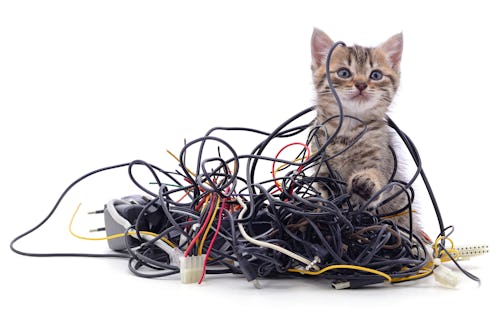
Unless you deliberately choose the offline lifestyle, your home is likely a rat's nest of copper, nylon, and rubber just waiting for you to untangle.
Wires and cables are an inescapable price to staying connected and on the cutting edge of technology. But you don't need to let the clutter take over your life — there are ways to control and manage the mess.
In line with our Spring Cleaning Issue, I follow two key tenets to tidying up our increasingly connected home. First, consolidate as many cables and chargers as possible into a single charging device. And second, do the hard work of untangling that cable-nest and never let it get tangled again. This means both safely getting rid of wires you don't need and making sure your remaining cables are stored neatly.
In this guide, I’ll share my tips for organizing your own cable collection, and recommend some great products for taming the cable monster.
Input may receive a portion of sales if you purchase a product through a link in this article. We only include products that have been independently selected by Input's editorial team.
Dock the essentials
The best thing you can do to tidy up your cables is to get the devices you charge daily onto one device instead of using dedicated wires for each. This means that multi-device wireless charging pads are your friend.
Apple’s addition of MagSafe to the iPhone 12 forced the accessory makers to shift dramatically so pads that support two phones are harder to find nowadays. Today, basically every multi-device charger that targets iPhone users features a higher-power Qi pad for a single phone, a lower-power Qi pad for wireless earbuds like AirPods, and an Apple Watch charger. Not all of these docks support MagSafe, however, many now have magnets for alignment with MagSafe-equipped phones. This could present compatibility issues with some Android devices, though mileage may vary.
If you want a MagSafe charger to get a full 15W fast charge for your iPhone, plus fast charging for the Apple Watch Series 7, Belkin’s MagSafe Boost Charge Pro 3-in-1 is my top pick. At 1.75 pounds, it's kinda heavy for a charger, but at least it won't move around on a table when you pull your iPhone off.
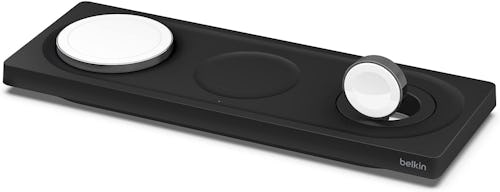
If you want a MagSafe iPhone charger that travels well and Apple's Apple’s MagSafe Duo doesn't cut it, the mophie 3-in-1 travel charger is the one to buy. This charger folds up just like the MagSafe Duo, but has a 3W Qi-dedicated pad for your AirPods, in addition to the MagSafe pad and a standard speed Apple Watch charger. While it includes its own storage bag (fits the 3-in-1 wireless pad, charger, and cable), it folds up small enough to fit into backpacks without taking up too much space. Mophie's charger is the MagSafe Duo successor Apple should have made.
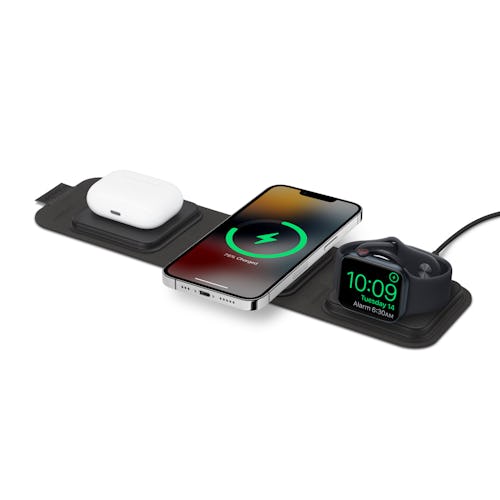
If you want the convenience of magnetic charging but want to avoid the upcharges that come with Apple-certified chargers, Anker’s MagGo series has a wealth of great options. Our favorite is the 633 Magnetic Wireless Charger. While it works as a standard magnetic charging dock with an extra coil to juice up your AirPods, this charger’s secret sauce is that the magnetic phone charger is also a detachable battery you can slide out on those days you need extra juice. While the lack of Apple MagSafe certification means it can’t charge your iPhone at 15W, standard 7.5W charging is more than enough for charging overnight. It also comes in $30 less than official MagSafe docks.
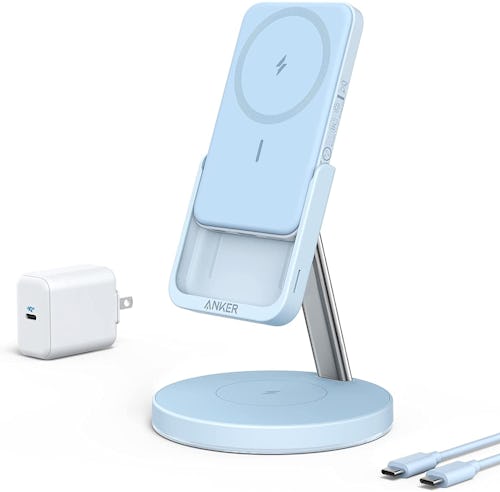
If you’re in the Android ecosystem, Samsung’s Wireless Charger Trio is your best bet. It has a larger pad with space for two devices, be it two phones, or a phone and a pair of Qi-enabled wireless earbuds, plus a divot for a Galaxy Watch. The only downside is the charger maxes out at 9W per device, making it better for overnight charging than a quick top-up.

Docks are also a great option for keeping game controllers in order and cutting down on clutter around your TV. For Xbox, PowerA’s officially licensed dock is a great deal since it includes the charging stand and the batteries needed to convert an Xbox controller into a rechargeable controller. Sony’s official DualSense station, while not the sturdiest thing in the world, matches the popped collar look of the PlayStation 5 well.
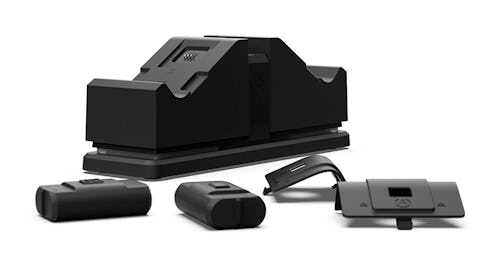

Tidying up your desk
Your next area of focus should be the place you get your work done. Whether you work on a laptop all day or have a dedicated desktop setup with a prized mechanical keyboard at its heart, you want to make sure your desk stays orderly if you work from home. Your goal here should be to reduce how much you’re plugging in around your desk and finding creative ways to neatly store the wires you absolutely need.
If you prefer to work on your laptop at a desk all day, Spigen’s ArkDock 120W is a game-changer. This four-port gallium-nitride-based (GaN) charger can output 100W when only one USB-C port is used, enough to fast charge a 14-inch MacBook Pro or standard charge a 16-inch. It can also standard charge a 14-inch MacBook Pro, USB-C iPad Air or Pro for those who use Universal Control. That extra 20W of headroom means you can charge up anything else you need in a pinch alongside your laptop off the two USB-A ports. Keeping this tiny powerhouse fastened to your desk with a command strip is an easy way to have power when you need it.
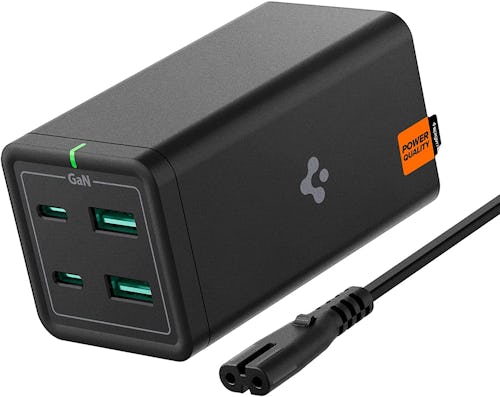
For those who need to keep their headphones at arms reach for daily Zoom meetings, a headphone stand is another invaluable accessory to pick up. If you want to keep your favorite pair of cans on your desk, I’m a big fan of this wooden Avantree stand. Its neutral design helps it fit in most spaces and is tall enough for most headphones to fit on. If desk space in your home office is at an absolute premium, headphone hook mounts are another great option, although cable management may be a bit of a challenge if you prefer to use wired headphones.

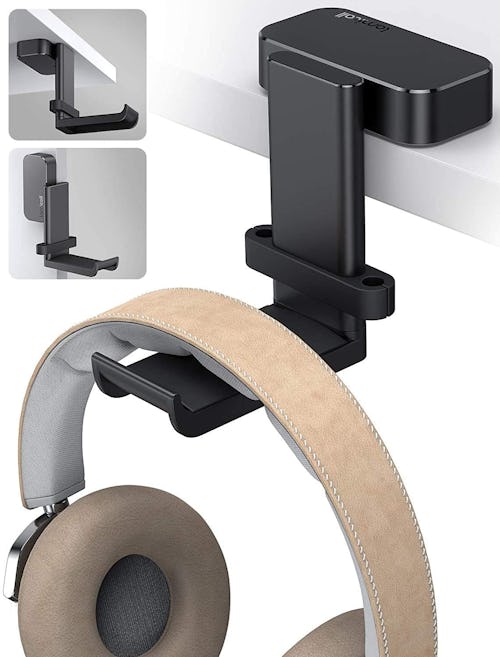
Those of you who live the desktop computer life know that the advantages mean more wires to deal with for things like your keyboard and monitor. That doesn’t mean that you’re doomed to a messier desk. Grabbing a coiled USB cable for your keyboard, for instance, is a great way to add some style and reduce how much loose wire is running over your desk. Or go wireless with a keyboard like the Logitech MX Keys Mini or a mechanical keyboard like the Keychron K8 Pro that works for PC and Mac.
One thing you'll definitely want to install on your desk is a cable management tray. Combined with properly tied cables (more on that later), attaching these to the back of your desk is the best way to tame extra slack from your PC and monitor’s power cables. They also keep the slack from anything you’re running behind your desk in order. Fully sells a great kit for desk cable management that includes wire trays, adhesive mounts, zip ties, and a power strip to boot.
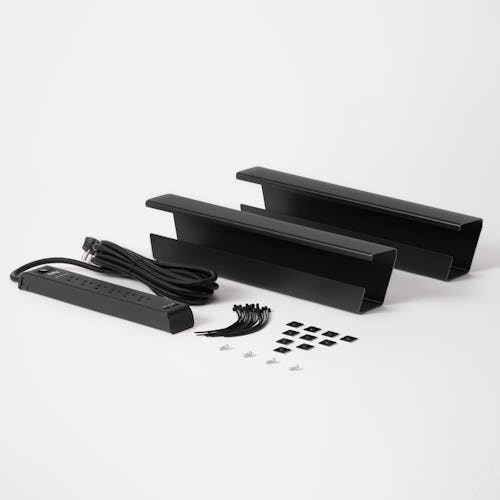
If you have lots of accessories on your desk, like a webcam, dedicated microphone, or external hard drives, you may want to grab a cable management box to sit on top of your desk as well. These are great for discreetly storing a power strip, or running your other wires through to keep things tidy. Retailers like Ikea also sell them for placing on the ground to hide unsightly external power adapters.
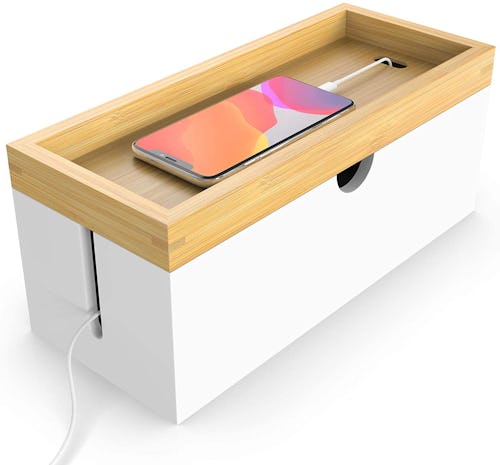
Reduce extra cables and chargers
Now that you’ve consolidated charging for your most-used devices, it’s time to finally get to that mess of wires you’ve been avoiding.
It's important not to hoard.
The first thing to do after you untangle is take stock of what you actually need to keep to charge your non-wireless capable devices. Do you mostly have USB-C devices in your home now — can you get rid of or reduce the number of mini-USB or micro-USB cables? If you worry you'll need a legacy cable, keep one of each — that's probably all you'll need.
How many Type-C cables do you need for your most-used devices like your laptop, tablet, or over-ear headphones? Do you need some to live at home and others to keep in your travel bag? Just how many extra HDMI cables does one person need? These are questions you need to answer which is why it’s important to dedicate a little time to take stock of your wires. If you feel the itch to keep more cables than necessary, you probably don't need them.
Once you have the cables you don’t need all together, be sure to get rid of them responsibly. Best Buy has e-waste recycling bins at its stores where you can safely dispose of old batteries and cables. Your local municipality may also have a community e-waste disposal facility. You can also donate them to friends and family and save them from buying new ones. Whatever you do, don’t throw those wires in the trash — please think about our oceans.
Same goes for extra chargers. Phones like the iPhone 12/iPhone 13 and Samsung Galaxy S21 Ultra/Galaxy S22 no longer come with chargers, but if you've got many from years past, now's a great time to take stock and reduce/get rid of any non-essential ones.
Cable organization
Now to hide and tidy up your rat's nest of wires. The first thing to pick up is some cable ties. You can get a bunch of these for super cheap on Amazon and they really help to keep those two-meter and longer cables in order. Put one on every cable you’re keeping, from your Type-C cables, to the special wires and adapters your Windows laptop needs. If you don’t want to use cable ties, I’ve been using this method to tie my cables up neatly for years.
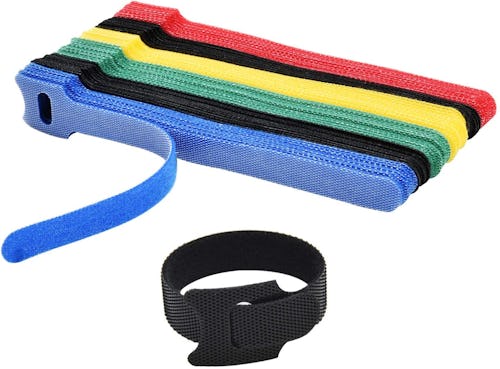
Tie your cables however you see fit, whether that be tightly, or in larger rings. Then, store them in a box or bin together. Avoid storing them in a drawer as it’s easy for things to get crowded there. Keeping your cable bin in a closet, or tucked inside a media cabinet will give you quick access and let you easily see all the cables inside. The cable ties will make sure you can always pull out the cable you need.
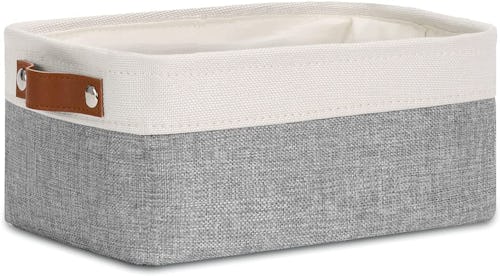
If, while untangling your wire-nest, you find yourself in need of new cables, fear not. I’m a big fan of Anker’s newest “Powerline flow” cables. They’re wrapped in a super soft silicone which prevents tangles in your bag and come in lots of pastel colors. If you need something more hardcore, Nomad’s all-Kevlar cables are excellent with their super strong casing and metal cable ends. Both these cables are available in USB-C and Lightning versions, and best of all, have cable ties included in the box.
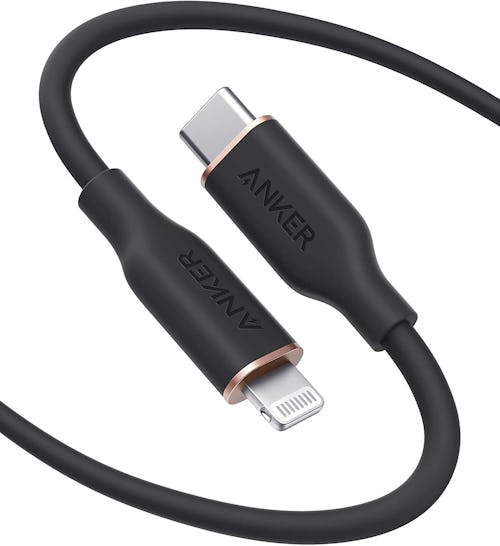
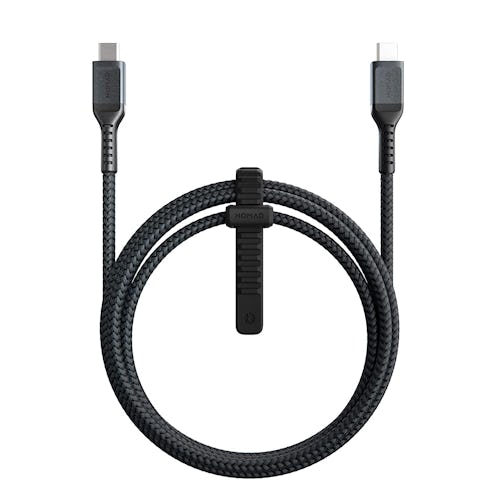
If you’re also eager to reduce the number of chargers you need to bring while traveling, Anker’s 735 Nano II 65W charger is a godsend for jet setters. It’s unbelievably compact while having enough power for standard charging a 14-inch MacBook Pro. Two USB-C ports and a Type-A port mean you should have all of your legacy devices covered. It also pairs well with mophie’s MagSafe travel charger.
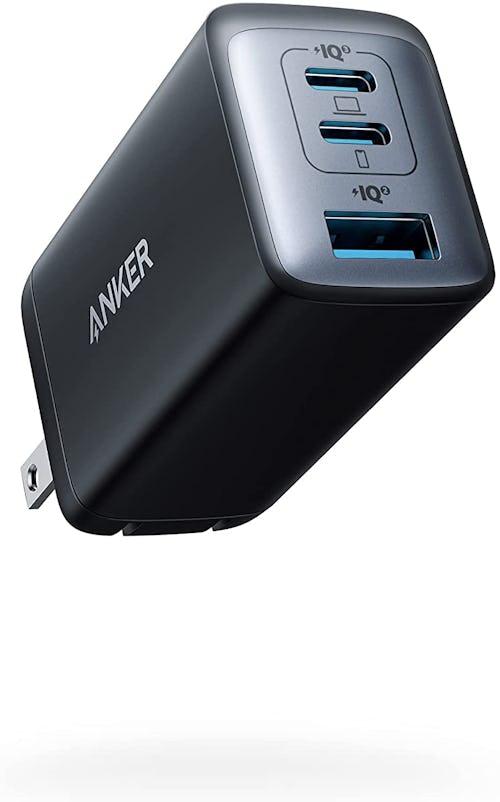
Don’t forget to retie your cables when you’re done
The important thing to remember going forward is: and don’t forget to toss them back in your cable bin. This is the key to cable peace, viewing them as tools to be cared for and not a mess to be hidden away. It’s also important to not let the rat’s nest be reborn, and avoid adding unnecessary cables to your life. If you get a new gadget that comes with a cable you don’t need, be sure to take those to an e-waste recycling facility or give them to someone who could use them instead of tossing them into the cable bin.
Well-organized cables are a key part of a happy gadget owner’s life, so don’t sacrifice that organization so easily.






